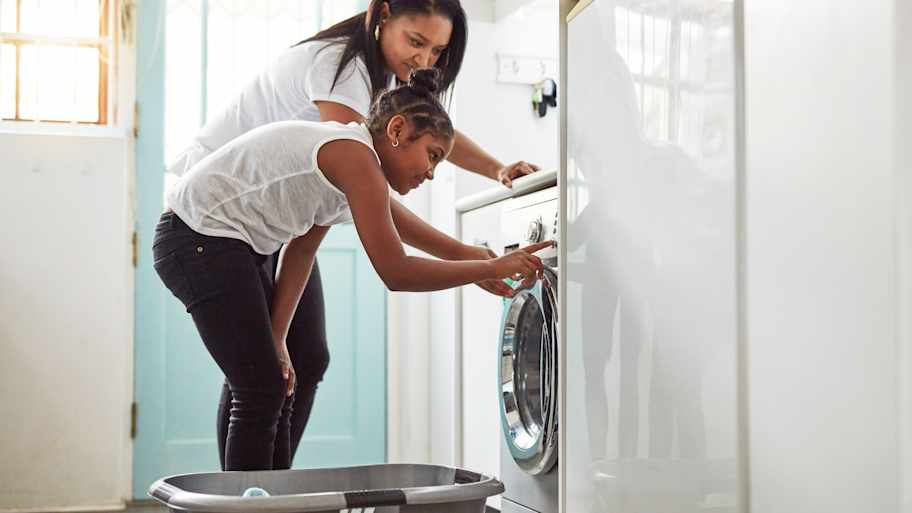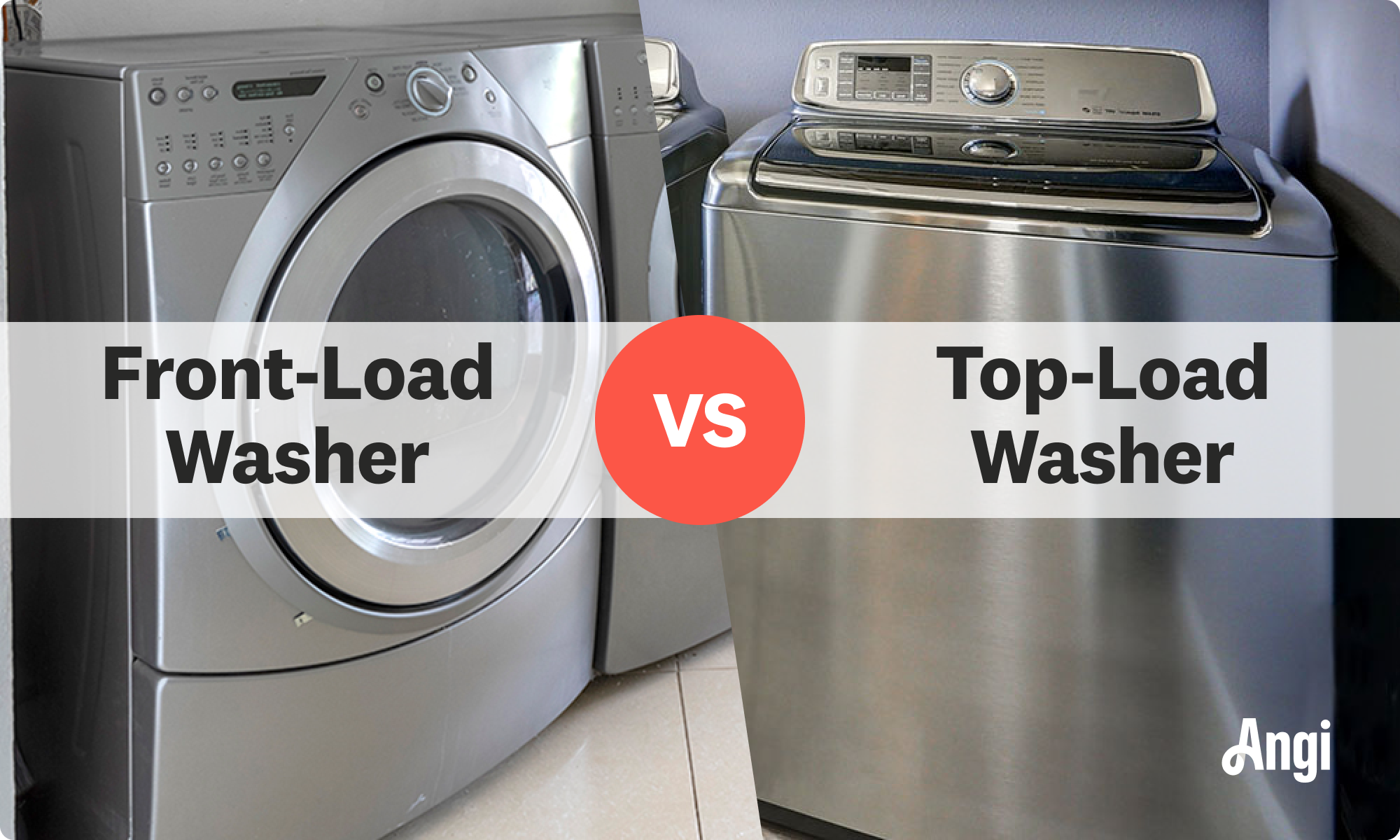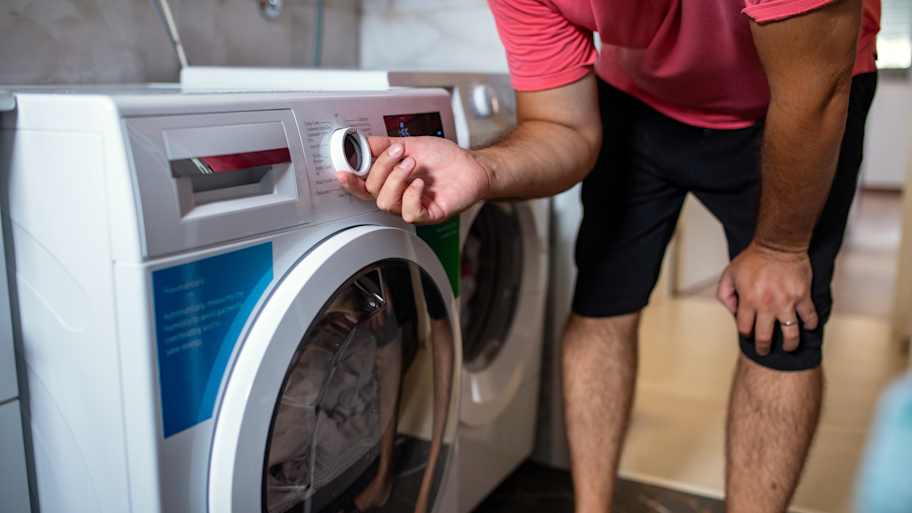
If your refrigerator has been damaged, refrigerator door dent repair cost will vary based on the imperfection's size, depth, and location. Use our guide to estimate how much you'll spend on refrigerator dent repair.
Finding the right washing machine isn’t always a squeaky clean process


Front-load washers are highly efficient, gentler on your clothes, and have superior cleaning abilities.
These space-saving models can stack with a compatible dryer.
Some of the drawbacks include longer wash cycles and susceptibility to mold growth around the door gasket.
Front-load washers are more expensive than top-load washers, but capabilities and features vary, so look at specific models.
Laundry day isn’t the most fun day of the week, but the right washing machine can make it a whole lot better. If you’re in the market for a new unit, weigh the pros and cons of front-load washers. The top-load washer has been the standard for most of modern history, but as technology evolves, so do people’s laundry habits.
While top-load washers are still the most common, front-load washers are creeping up in popularity. Find out if this rising trend is the cleanest fit for your home.

A front-load washer is exactly what it sounds like—a type of washing machine that you can load from the front rather than the top. This type of machine has a hatch that opens on the front of the unit. When closed, it locks into place, and the drum spins both ways with a tumbling motion that pushes water around the clothes. This helps get your clothes cleaner with less damage and water usage, and an appliance pro can install it properly.
| Pros of Front-Load Washers | Cons of Front-Load Washers |
|---|---|
| Higher efficiency | Longer wash cycles |
| Fits in small spaces | Prone to mold growth |
| Better for your clothes | Higher up-front cost |
| Various cycle options | Shorter lifespan |
| Ideal for big loads | More difficult to load |
The pros of front-load washers include higher efficiency, a stackable design, large capacity, and more cycle options. They’re also better for your clothes and give you a cleaner wash. Here’s how the benefits break down.
Front-load washers are highly efficient. Compared to the average top-load washer, they use up to 50% less electricity and 65% less water. If you do a lot of laundry, this can save you on utility bills.
Front-load washers are better for smaller laundry rooms than top-load washers—particularly if you’re installing your unit alongside a dryer. Narrow models can squeeze into tight spaces, and you can stack most units with a dryer to limit the horizontal footprint.
Top-load washing machines use an agitator that can wear down your clothing over time. This mechanism has a spindle with a propeller planted in the center of the drum. The spindle spins and rubs against your clothing, freeing it from dirt but potentially damaging the fabric.
A front-load washer prevents damage to your clothes because they don’t force them to rub against a spindle or each other. Instead, it cleans by pushing water and detergent through your clothing and tumbling the load, helping maintain the integrity of the fabric.
Front-load washers have more cycle options than their top-load counterparts—including delicate, sanitize, and denim-specific cycles—and some have smart features. A front-load washer will also automatically adjust the amount of water used during a cycle based on the size of the load, so smaller loads work well in larger machines.
Front-load washers don’t have a center agitator taking up space in the drum, allowing them to hold larger loads of laundry—though this depends on the model. Larger units are an excellent choice for homeowners with dirty jobs or larger households.

Despite their many benefits, front-load washers have cons, including longer wash cycles, more challenging maintenance, less reliability, higher up-front costs, and less comfortable loading. Here’s how the drawbacks break down.
Front-load washers take longer to wash clothing. The average cycle is 60 to 120 minutes, but it can take longer depending on the setting. A standard agitator top-loader only takes 35 to 70 minutes per load, while high-efficiency top-loaders take 60 to 80 minutes per cycle.
Front-load washing machines are susceptible to mold and mildew growth that commonly builds up inside the gasket around the door. Leave your washer open to allow it to air dry to prevent mold growth (provided you don’t have children who can access the machine) and regularly clean the gasket to remove buildup.
Front-loaders cost more than top-loading machines. You can find a basic top-load washing machine for as low as $350, while front-load washers start at around $700. Factor in monthly utility savings when making a decision, since front-loaders are more efficient.
Front-load washers have more parts, meaning there are more parts that break down and need repairs. Their design leads to more frequent leaks, and their lifespan is a few years shorter than that of top-loaders. That said, proper front-load machine maintenance can help prevent issues before they occur.
Front-load washers have doors that open from left to right or right to left, which can make transferring loads easier. However, many homeowners still find that front-load washers are more difficult to load than top-load washers. When overstuffed, clothes can tumble out of the front, making the door difficult to close. The door also locks, so you can’t add clothes once the cycle starts.
The main alternative to a front-load washer is a top-load washer. Top-load washers cannot be stacked, are harsher on your clothes, and are less efficient, though you can purchase high-efficiency models. Despite these drawbacks, they’re popular for a reason, and their benefits include:
Shorter cycle times
Lower up-front cost
Can add clothes mid-cycle
Easier to load and unload because you don’t have to bend over
Longer lifespan
Easier maintenance
Can be safer in households with children
The benefits of a front-load washer are significant: They’re more efficient, better for your clothing, and get your clothes cleaner than the average top-loader. However, keep in mind that many of these benefits are model-dependent.
There are top-load washers with similar benefits—whether they’re large capacity, have an energy-efficient design, come with luxury features, or use an impeller. An impeller is a type of rotor that spins to create a water current that moves the clothes. In comparison, the agitator in traditional top loaders rubs the clothes against each other.
Unless you want to stack your washer and dryer, remember to look at specific models rather than only weighing the pros and cons of top-loaders versus front-loaders. The exception is if you’re in a household with kids. If you use this type of machine and have young children, make sure to keep the door to your laundry room locked to avoid serious injury.
Hire a local washing machine pro to help you choose the best unit for your space and handle the installation so your washer works for years to come.
From average costs to expert advice, get all the answers you need to get your job done.

If your refrigerator has been damaged, refrigerator door dent repair cost will vary based on the imperfection's size, depth, and location. Use our guide to estimate how much you'll spend on refrigerator dent repair.

Discover the average ice maker repair cost, key price factors, and tips to save. Learn how to budget for your ice maker repair and when to repair or replace.

Get a clear estimate for stove repair costs. Learn what impacts pricing, compare repair vs. replacement, and find tips to save on your next stove repair.

Cooking in your kitchen wouldn’t be possible without a range hood to capture all of that greasy smoke and billowing steam. This guide breaks down the types of range hoods and their benefits and drawbacks so you can make an informed decision.

If your fridge is not cold but the freezer is, you can use these troubleshooting tips to find and address the issue, possibly without paying for repairs.

A frozen washing machine drain can interrupt your laundry routine. Learn what to do when your washing machine drain is frozen and how to prevent it.